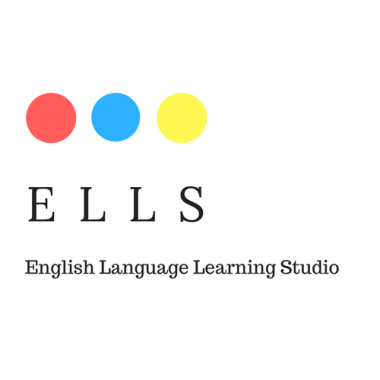What is a project in an educational context? Can we work with projects in the same way we usually work? Is a project a longer version of a lesson? What are the advantages and the disadvantages of Project-based learning? Is it incompatible with traditional ways of evaluation? In this post, I intend to give answers to these questions acknowledging that more questions may come up from my writing.
Characteristics of project work
Project work is defined by Ribé and Vidal (1993: 5) as “(…) a full implementation of a second or a third generation task”, but it is longer and more complex than a task, it is a macro-task. It consists of micro-tasks that can be expanded or reduced according to the negotiation carried out between the teacher and the students. The steps, length, process and product are pre-planned by the teacher, “but not totally predetermined” (Idem).
Grant (n.d: 1) states that Project-based learning is an instructional method centred on the learner that allows in-depth investigation of a topic. Having more autonomy, students take more responsibility for their learning process (Tassinari, 1996; Wolk, 1994; Worthy, 2000 in op. cit.: 1); “(…) project-based learning and the construction of artifacts enable the expression of diversity in learners, such as interests, abilities and learning styles” (Grant, n.d.: 2).
Project-based learning takes ideas from constructivism in which learning is seen as the construction of knowledge through interaction (Perkins, 1991; Piaget, 1969; Vygotsky, 1978 in op. cit.: 2), and constructionism (Harel & Papert, 1991; Kafai & Resnick, 1996 in op. cit.: 2) which takes the notion that people learn best when they construct an artifact that can be shared and reflected upon (ibid).
From a language learning point of view, project work requires comprehensible language input (Krashen), comprehensible language output (Swain), the process of content and language learning, negotiation of objectives, and self-access materials (Ribé & Vidal, 1993: 6-7).
Project work is also aligned with Widdowson’s notion of ‘authenticity’: how the reader responds to a text (in Ball & Hockly, n.d.) See my post Reading in an L2: the idea of ‘Authentic Reading’ for more details on authenticity. From this perspective, a text may elicit an authentic response from the reader independently of its nature (i.e.: whether it is an original text in English or an adaptation of one).
Advantages and disadvantages of project work
Project work or Project-Based Learning (PBL) has many advantages such as,
- enhancing learners’ autonomy
- fostering motivation and engagement
- developing language learning and skills
- catering for individual differences
- authentic use of the L2
- developing problem-solving skills
- enhancing cooperative learning
- integrating content and language learning
However, some teachers may be overwhelmed by the changes necessary for its implementation. There are three main aspects of PBL that teachers and learners might find challenging:
- classroom management changes radically
- students and teachers need to undertake different roles and they might probably feel uncomfortable with that change.
- students without experience in group work may have difficulties negotiating compromise (Johnson & Johnson, 1989; Socha & Socha, 1994 in Grant, n.d.: 9)
To overcome these problems, it is important to begin slowly, a short-term project about a topic students are familiar with might be a good choice (Grant, n.d.:9). Working with group dynamics before starting the project is advisable. Assessment should provide constructive and authentic feedback; to achieve that, the most appropriate assessment tools are rubrics, learning diaries or portfolios.
Evaluation of project work
In a project work, different types of assessment are needed to evaluate content, language, presentation, effort, attitude and cognitive development. Therefore, we will need both formative and summative assessment tools. Each aspect of the project can be evaluated from different points of view (Ribé & Vidal, 1993: 82). Common tools used in project work are, 
- self-assessment
- peer assessment checklists
- questionnaires
- learning diaries
- rubrics
- portfolios.
However, as teachers usually must fulfil institutional requirements too, traditional testing can be included in the project and integrated as another way of evaluating students’ progress.
Main elements of a project
- Understanding the dynamic of a project.
- Provide a context for the project (situation, audience)
- Which problem/ questions should the project respond to?
- Which is the final outcome?
- How will the final outcome be evaluated?
Instrumental elements of a project
- How to divide the project into stages?
- Division of roles
- Content learning needs
- Language learning needs
- Resources needed
- Estimated time of the project
- Evaluation throughout the project (assessment tools? schedule?)
Project-based learning into practice
In this section, you will see how I planned a project about a tourism blog for teenagers or young adult learners. The name of the project is Show the world why your city is worth visiting. A collaborative blog.

Cover of the project
Below, you will see the first two pages of the Teacher’s notes to show you how I included the main and some of the instrumental elements of a project into a teaching plan.

Teacher’s notes p. 1

Teacher’s notes p. 2
*If you want to get the rest of the Teacher’s notes and the students’ handout for this project, you can buy it at Teachers Pay Teachers
Have worked with projects? Which projects are you proud of? Would you add more advantages to Project-based learning? And more disadvantages? What have you learned from Project-based learning?
If you haven’t worked with projects yet, what prevents you from doing so? Do you think it is too time-consuming? Do you think it requires too much effort and skills from teachers? Can all learners benefit from project work?
Share your thoughts with us!
References
BALL, P. AND HOCKLY, N. (n.d.). Developing Language Skills in the Classroom. Funiber.
GRANT, M. (2002) “Getting a grip on project-based learning: theory, cases and recommendations” [online], Meridian: A Middle School Computer Technologies Journal a service of NC State University, Raleigh, NC, Vol. 5(1). Available at https://www.ncsu.edu/meridian/win2002/514/project-based.pdf [Retrieved: 19th February 2016]
RIBÈ R. AND VIDAL, N. 1993. Project Work; Step by step. Heinemann. England.


cool, where this place located?
LikeLike
Hi, Retno. Which place?
LikeLike
Hi Mariangel, I liked your post so much. I am finishing my thesis research about PBL and I’m looking for some authors that criticize this methodology to make a contrast in my paperwork, so if you can share some information it would be great!
Best regards,
Juan Sebastián Salazar Mejía
LikeLike
Hi, Juan. I’m glad you liked it. Regarding your request, you may look for key words on google about the discrepancies between teaching with projects and evaluating with standarized tests. Lack of cooperative skills on the part of the students; coverage of a fixed syllabus and time management are also challenges for PBL. You can search on Researchgate and Academia.edu for investigations on the field you’re writing about. I hope that helps.
LikeLike